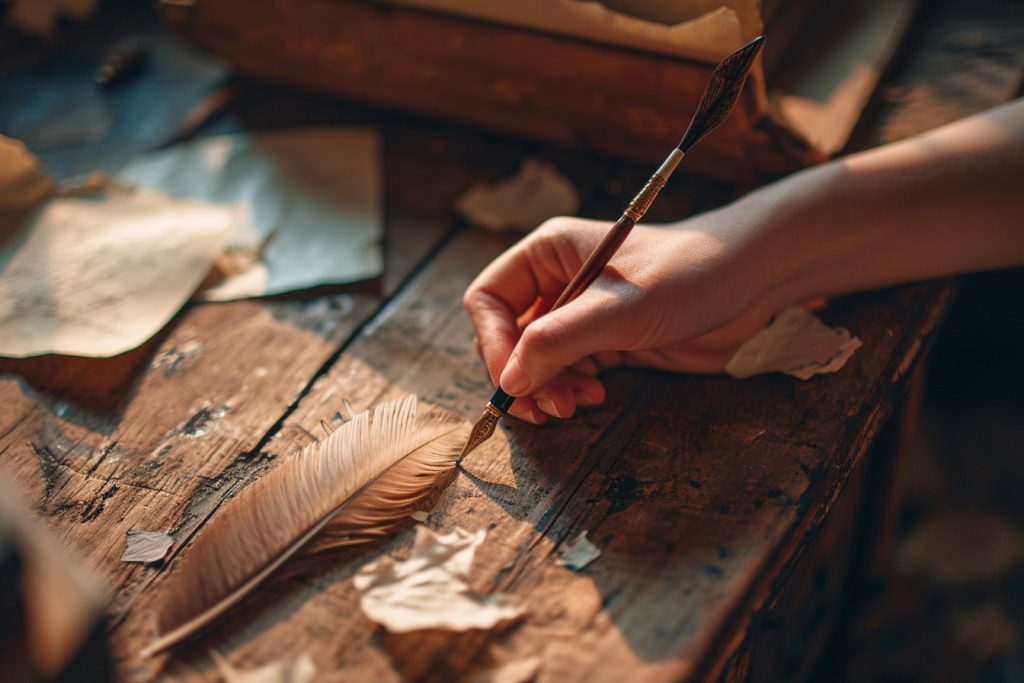Calligraphy, the classical art of fancy writing, has been cherished and practiced for centuries across cultures. With its serene motions and stunning results, it’s an engaging hobby that can transform your writing into visual art. Whether you’re crafting wedding invitations, sprucing up your journal, or just looking to impress friends with your penmanship, mastering calligraphy can be a rewarding and fun experience. In this guide, we’ll walk you through the essentials, from the tools you’ll need to get started to the various styles you can explore. So grab your nibs and ink, and let’s dive into the swirling world of calligraphy!
Starting with the Basics: Tools & Tips
Before you start channeling your inner scribe, let’s talk tools. A proper calligraphy kit should include a set of nibs, a pen holder (straight or oblique), bottles of ink, and high-quality paper that can handle your inky endeavors without bleeding or feathering. Consider getting a beginner’s set, which often comes with these items packaged together. Remember, the nib’s size and flexibility affect the thickness and flow of your lines, so don’t shy away from experimenting with different kinds until you find the one that feels just right.
Aside from the tangible tools, some tips can significantly ease your journey. First, maintain a proper posture and a relaxed grip; it’s essential for the smooth motion that calligraphy requires. Second, the angle at which you hold the pen determines the width of the strokes – typically, a 45-degree angle is a good starting point. Lastly, take care of your tools – clean your nibs after use, cap your inks, and store your paper flat to avoid crinkles. With these basics in check, you’re ready to start practicing your letterforms.
The Art of Strokes and Serifs
Calligraphy is all about the beauty of the stroke, with varying pressure creating thick and thin lines that give the script its character. To master this, you’ll work with basic strokes, which are the building blocks of all letterforms. These strokes include upward thin lines, downward thick lines, and transitions between the two. Training your hand to apply the right pressure at the right moment is key, and like any skill, it requires patience and practice. Start by tracing letters and stroke patterns before moving on to freehand writing.
Now let’s talk about serifs – those little feet at the ends of letters in some fonts. Adding serifs can give your calligraphy a more structured and traditional look, reminiscent of times when scribes meticulously copied manuscripts. Whether you prefer the ornate nature of serif fonts or the clean simplicity of sans-serifs, knowing how to create these features adds another layer to your calligraphy game. Just remember that consistency is crucial, so try to ensure all your serifs are similar in size and style for a cohesive appearance.
Practicing Script: Style Variations
Once you’ve got the hang of basic strokes, it’s time to dive into the diverse world of calligraphy styles. The most popular styles include Script, Gothic, Italic, and Copperplate. Each style has its own set of rules—and breaking these rules once you learn them can lead to original, creative expressions. Don’t be afraid to imitate different fonts and scripts as you practice; this is a powerful way to understand the nuances that make each style unique.
To keep your practice sessions fun and engaging, challenge yourself with projects that excite you. Write out your favorite quotes, author letters to friends, or decorate your home with handmade signs. As you repeat letters and words, you’ll start to develop a rhythm, and your personal style will begin to shine through. Pay attention to how different writing implements and inks change the feel and look of each alphabet, and remember, progress in calligraphy is all about steady, mindful repetition. Practice might not always make perfect, but it certainly leads to improvement!
Mastering the art of calligraphy is a journey filled with the satisfaction of seeing your words transform into works of art. It’s a meditative process that calls for patience, but the act of creation is as rewarding as the final result. From choosing the right tools to practicing various scripts, your path to fancy writing doesn’t have to be a solemn one. Keep it light-hearted and explorative, and you’ll find joy in every stroke and serif. So let your creativity flow, and let each page be a testament to your dedication and love for calligraphy. Happy writing!









